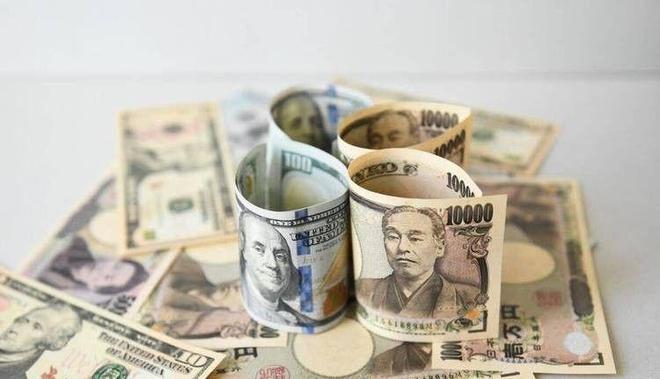
Recently, the yield of Japan's 30-year and 40-year treasury bond soared to 2.999% and 3.336%, the historical highs, and the auction failed for several consecutive days. The turmoil in the bond market is exposing the deep risks of Japan's economy. As the world's third-largest bond market with a scale of over 1200 trillion yen (approximately 8 trillion US dollars), Japanese bonds account for 17% of global sovereign bonds. Their volatility is not only a painful policy shift, but also carries systemic risks. The Federal Reserve has warned of their "cross-border spillover effects".
The collapse of the Japanese bond market was caused by the disappearance of policy anchors. In 2016, the Bank of Japan launched the yield curve control (YCC) policy, which anchored the yield of 10-year treasury bond around 0% by unlimited bond purchases. The central bank once held more than 53% of Japanese bonds, leading to the failure of the market pricing function. The interest rate hike cycle that began in March 2024 broke the balance: first, the YCC range was expanded to ± 1%, and then the balance sheet was reduced. The monthly bond purchase scale decreased from 5.7 trillion yen to 2.9 trillion yen in 2026, shifting from net buyers to net sellers. The policy shift allowed investors to reassess risks. Although the core CPI fell from 4.2% to 2.8% in 2024, the rise in wages and the depreciation of the yen still pushed up long-term inflation expectations, and long-term treasury bond became the target of selling. On May 20, the bidding multiple of 20-year treasury bond was only 2.5 times, the lowest since 2012, and the market liquidity dried up.
Overseas investors' stampede exit exacerbates panic. In the first seven months of this year, overseas funds surged a record 9.3 trillion yen, but later suffered a "double blow" due to soaring yields and the yen depreciating to 152:1 against the US dollar, resulting in exchange rate and bond losses. In May, overseas investors sold a net 1.8 trillion yen of treasury bond bonds in a single month, creating a vicious circle between selling and rising yields. In May, the Bank of Japan bond market functional index fell to -44, the bid ask spread expanded to three times the beginning of the year, and the intraday fluctuation of 10-year treasury bond exceeded 50 basis points, hitting a new high since 2008.
Fiscal constraints have become the last straw that crushes the market. Japanese government debt exceeded 1200 trillion yen, accounting for more than 250% of GDP. In the issuance of 28.2 trillion yen treasury bond in fiscal year 2025, 60% of the debt was used for debt repayment and interest payment, accounting for 25% of fiscal expenditure. In the fiscal year 2025, the interest expenditure on treasury bond will reach 10.52 trillion yen, double that of the fiscal year 2023, accounting for 1.67% of GDP and exceeding the proportion of national defense budget. However, Japan's fiscal revenue is fragile, with a tax revenue of only 65 trillion yen in fiscal year 2024, but social security expenditures reaching 35 trillion yen. The aging population has also pushed up the average annual growth rate of social security expenditures by 3%, and debt repayment funds have been squeezed. The market is worried about the debt spiral of "issuing bonds to pay interest and raising interest rates to push interest". The issue of 50 year ultra long term treasury bond before is still cold, which shows insufficient confidence in long-term solvency.
The crisis has formed a dual impact both internally and externally. Internally, banks such as Mitsubishi UFJ have raised mortgage interest rates, resulting in a year-on-year decrease of 18% in new home transactions in Japan in May; Toyota and other car companies postponed investment, and the manufacturing PMI fell to 48.2 in June, contracting for three consecutive months; Education and infrastructure expenditures are forced to decrease by 8% in the fiscal year 2025, putting pressure on economic recovery. Externally, the collapse of the yen arbitrage transaction triggered capital backflow. In June, Japanese investors sold a net 1.2 trillion yen of overseas assets, pushing up the yield of the U.S. 10-year treasury bond bonds by 40 basis points, and expanding the bond spreads of peripheral countries in the euro area. The Bank of Japan is caught in a dilemma: raising interest rates to maintain stability in the bond market may lead to a wave of unemployment, while maintaining easing will exacerbate inflation and capital outflow risks. In September, the auction bid multiple of 30-year treasury bond rose to 3.31, which was actually the foundation of the central bank's emergency bond purchase of 1.2 trillion yen, a non trend reversal.
The IMF warned in its July Global Economic Outlook that Japan needs to balance "monetary policy normalization and fiscal sustainability", otherwise the crisis may spread globally. The Japanese debt crisis is a concentrated release of decades of loose policy risks, and its policy transformation and fiscal restructuring challenges not only test the resilience of the Japanese economy, but also affect the global financial landscape.

報告顯示,中國電力投資加速增長,預計2024年電網基建投資將超過5300億元。
近日,市場迎來了一則引人注目的消息:工業巨頭3M公司(MMM.N)在本周五公布了其季度業績報告,隨後股價飆升至近兩年來的
最近,外媒給OpenAI算了筆賬,今年可能要血虧50億美元。
近日,巴黎奧運會和世界鐵人三項協會聯合發布了一項重大決定,宣布因塞納河水質污染問題,原定於近期進行的奧運會鐵人三項首次下
當地時間7月18日,法國巴黎發生了一起令人震驚的持刀襲警事件。
近期,一則重大消息在國際舞臺上引起軒然大波,馬來西亞宣布加入金磚國家。
調查發現,互聯網和智能手機的使用幹擾了韓國近五分之一學生的生活。